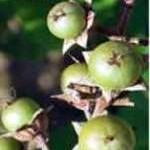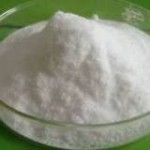STAT 계열 전사활성조절단백의 일원인 STAT3 (signal transducer and activator of transcription3)는 본래에는 활성화되지 않은 형태로 세포질(cytoplasm) 내에 존재합니다. STAT 단백질은 때로는 “DNA 결합인자”라고 불리는 그룹의 일부입니다. 이들 단백질은 DNA 염기서열에 결합하며, 그리하여 DNA에 있던 유전정보가 RNA로 옮겨가는 전사(transcription)의 과정을 조절합니다. STAT3는 다양한 성장인자(growth factors)와 사이토카인(cytokines)에 의해 STAT3 전사활성 도메인(transactivation domain) 내의 타이로신 잔기(tyrosine residue)가 인산화 됨으로써 활성화됩니다. 인산화된 STAT3 (p-STAT3)는 핵(nucleus) 안으로 들어오게 되며, 종양형성에 관련된 광범위한 표적유전자의 발현을 유도합니다.
종양세포는 성장을 지속하고, 세포자멸사(apoptosis)를 피하기 위해 STAT3에 의존합니다. STAT3는 대장암, 간암, 유방암, 전립선암, 다발성골수종(multiple myeloma), 교모세포종(glioblastoma)을 포함한 광범위한 종양에서 상시 활성화되어 있습니다. 아마도 사람의 모든 종양의 절반 이상이 활성화된 STAT3를 상시 지니고 있을 것입니다. 상시 활성화된 STAT3, 그리고 어느 정도의 STAT5는 종양세포의 증식과 생존, 침윤을 증가시키고, 한편으로는 항종양면역을 억제합니다.
STAT3 as a central mediator of neoplastic cellular transformation.
Crosstalk between cancer and immune cells: role of STAT3 in the tumour microenvironment.
Regulation of the innate and adaptive immune responses by Stat-3 signaling in tumor cells.
Role of STAT3 in Transformation and Drug Resistance in CML.
또한 STAT3는 종양을 촉진하는 염증과정을 매개합니다. 전사인자 NF-kB는 면역반응의 마스터 조절인자(master regulator)입니다. NF-kB 역시 암의 발생 및 암세포의 성장과 생존을 촉진하는 작용을 할수 있습니다. NF-kB와 STAT3는 모두 완전히 다른 신호경로 기전에 의해 조절됩니다. NF-kB와 STAT3가 일단 활성화 되면 항세포자멸사, 증식촉진 및 면역반응 유전자들의 발현을 조절합니다. NF-kB와 STAT3의 활성화와 이들 사이의 상호작용은 악성세포와 그 미세환경, 특히 종양에 침윤하는 염증/면역세포 간의 대화 조절에서 핵심역할을 합니다.
Dangerous liaisons: STAT3 and NF-kappaB collaboration and crosstalk in cancer.
Persistently activated Stat3 maintains constitutive NF-kappaB activity in tumors.
STAT3의 활성은 종양세포가 당분해성 에너지 파생과 혈당 의존성, 즉 워버그효과(Warburg effect)에 탐닉하도록 하는 데 중요한 역할을 합니다. 저산소상태의 종양세포는 에너지를 생산하기 위해 혈당과 당분해과정(glycolysis)에 의존해야 합니다. 이러한 선호는 산소가 부족한 환경에서는 정상적인 것입니다. HIF-1(저산소유도인자-1)은 저산소상태에서 유도되는 유전자반응을 조절하는 마스터 전사조절인자입니다. 저산소상태와 HIF-1은 사실상 당분해성 경로의 모든 효소를 비롯해 당수송체 1과 3 (GLU1, GLU3)을 증가시킵니다. STAT3는 기초적인, 그리고 성장신호경로가 유도하는 HIF-1의 발현 모두에 필요합니다. 더욱이 STAT3는 Akt의 발현을 조절하며, Akt는 HIF-1의 상향조절에 필요합니다. 그러므로, 암치료에서 STAT3 발현의 억제는 잠재성이 큰 치료적 접근방법의 하나일 것입니다.
A STAT3-mediated metabolic switch is involved in tumour transformation and STAT3 addiction.
Effects of hypoxia and HIFs on cancer metabolism.
 바나바(banaba, Lagerstroemia speciosa L.)는 필리핀, 인도 및 그 주변 국가 같은 열대기후에서 자라며 꽃을 피우는 식물입니다. 전통의학에서 바나바 추출물 (banaba extracts)은 당뇨병과 신장 증상의 치료에 오랜 기간 사용되어 왔습니다. 코로솔산(corosolic acid 또는 글루코솔)은 바나바 잎에서 추출되는 활성성분입니다. 펜타사이클릭 트리터펜(pentacyclic triterpene)의 일종인 코로솔산은 글리코겐 가인산분해효소(glycogen phosphorylases)를 억제합니다. 트리터펜의 글리코사이드(glycoside)는 항종양, 항고혈압, 항균, 항산화, 항염증, 항당뇨병 및 항콜레스테롤 같은 광범위한 치료효능을 지니고 있습니다. 코로솔산은 아몬드의 곡피(almond hulls)와 병꽃나무(weigela subsessilis), 차조기, 능소화(campsis grandiflora) 및 다른 허브에서도 발견됩니다.
바나바(banaba, Lagerstroemia speciosa L.)는 필리핀, 인도 및 그 주변 국가 같은 열대기후에서 자라며 꽃을 피우는 식물입니다. 전통의학에서 바나바 추출물 (banaba extracts)은 당뇨병과 신장 증상의 치료에 오랜 기간 사용되어 왔습니다. 코로솔산(corosolic acid 또는 글루코솔)은 바나바 잎에서 추출되는 활성성분입니다. 펜타사이클릭 트리터펜(pentacyclic triterpene)의 일종인 코로솔산은 글리코겐 가인산분해효소(glycogen phosphorylases)를 억제합니다. 트리터펜의 글리코사이드(glycoside)는 항종양, 항고혈압, 항균, 항산화, 항염증, 항당뇨병 및 항콜레스테롤 같은 광범위한 치료효능을 지니고 있습니다. 코로솔산은 아몬드의 곡피(almond hulls)와 병꽃나무(weigela subsessilis), 차조기, 능소화(campsis grandiflora) 및 다른 허브에서도 발견됩니다.
당대사와 지질대사의 다양한 양상에 대한 바나바와 코로솔산의 유익한 효능에는 복합적인 작용기전이 관여하는 것으로 보입니다. 이들 효능은 PPAR, MAPK, NF-κB, STAT3 및 기타 신호전달인자에 의해 매개되는 것으로 보입니다. 코로솔산은 STAT3 와 NF-kB의 활성화를 직접 억제합니다. 다음 연구보고는 코로솔산이 STAT3 와 NF-kB의 활성화를 억제함으로써 교모세포종(glioblastoma) 세포의 증식을 억제한다는 결과를 보여줍니다. 교모세포종은 가장 흔하고 치명적인 형태의 주요 뇌암(brain cance)의 일종입니다. 교모세포종은 수술과 방사선 및 항암제를 복합한 요법을 사용해도 평균 약 14개월 정도 생존합니다. 허발짐 식초(Herbalzym Vinegar)에는 고순도의 생리적 이용율이 가장 높은 코로솔산이 함유되어 있습니다.
A review of the efficacy and safety of banaba (Lagerstroemia speciosa L.) and corosolic acid.
Breaking the NF-κB and STAT3 alliance inhibits inflammation and pancreatic tumorigenesis.
 또한 비타민 E의 일종인 감마토코트리에놀(gamma-tocotrienol)과 글루코사민(glucosamine)은 상시 및 유도 STAT3 신호경로의 새로운 억제성분입니다. STAT3는 세포질 내에서 STAT3 단백질 단위체의 타이로신 잔기 Tyr705와 인산기가 결합할 때 활성화됩니다. 글루코사민은 이 과정을 방해합니다. STAT3 신호경로가 상시 활성화되면 서바이빈(survivin) 유전자의 발현이 유도되며, 세포자멸사(apoptosis)에 저항하게 됩니다. 세포자멸사 억제 단백질인 서바이빈(survivin)의 발현은 잘 알려진 STAT3의 표적입니다. 글루코사민은 STAT3 경로의 억제를 통해 서바이빈(survivin)의 발현을 억제시킵니다. 글루코사민은 체내에서 발견되는 자연성분으로, 글루코스(당)과 글루타민이란 아미노산으로 구성된 아미노당(amino sugar)입니다. 글루코사민은 연골(cartilage)의 형성과 수리, 그리고 다른 신체조직에 사용되는 물질인 글루코사미노글리칸(glycosaminoglycan)의 생산에 필요합니다. 나이가 들며 노화가 진행되면 글루코사민 생산이 줄어듭니다. 미국의 역학자들(epidemiologists)은 글루코사민을 복용하는 사람들에서 폐암과 대장암 발병율이 낮았으며, 또한 더 장수하였다고 발표하였습니다.
또한 비타민 E의 일종인 감마토코트리에놀(gamma-tocotrienol)과 글루코사민(glucosamine)은 상시 및 유도 STAT3 신호경로의 새로운 억제성분입니다. STAT3는 세포질 내에서 STAT3 단백질 단위체의 타이로신 잔기 Tyr705와 인산기가 결합할 때 활성화됩니다. 글루코사민은 이 과정을 방해합니다. STAT3 신호경로가 상시 활성화되면 서바이빈(survivin) 유전자의 발현이 유도되며, 세포자멸사(apoptosis)에 저항하게 됩니다. 세포자멸사 억제 단백질인 서바이빈(survivin)의 발현은 잘 알려진 STAT3의 표적입니다. 글루코사민은 STAT3 경로의 억제를 통해 서바이빈(survivin)의 발현을 억제시킵니다. 글루코사민은 체내에서 발견되는 자연성분으로, 글루코스(당)과 글루타민이란 아미노산으로 구성된 아미노당(amino sugar)입니다. 글루코사민은 연골(cartilage)의 형성과 수리, 그리고 다른 신체조직에 사용되는 물질인 글루코사미노글리칸(glycosaminoglycan)의 생산에 필요합니다. 나이가 들며 노화가 진행되면 글루코사민 생산이 줄어듭니다. 미국의 역학자들(epidemiologists)은 글루코사민을 복용하는 사람들에서 폐암과 대장암 발병율이 낮았으며, 또한 더 장수하였다고 발표하였습니다.
D-glucosamine inhibits proliferation of human cancer cells through inhibition of p70S6K.
실리마린(silymarin)의 주요 활성성분인 실리비닌(silibinin) 역시 STAT3의 상시적 활성화를 억제합니다.